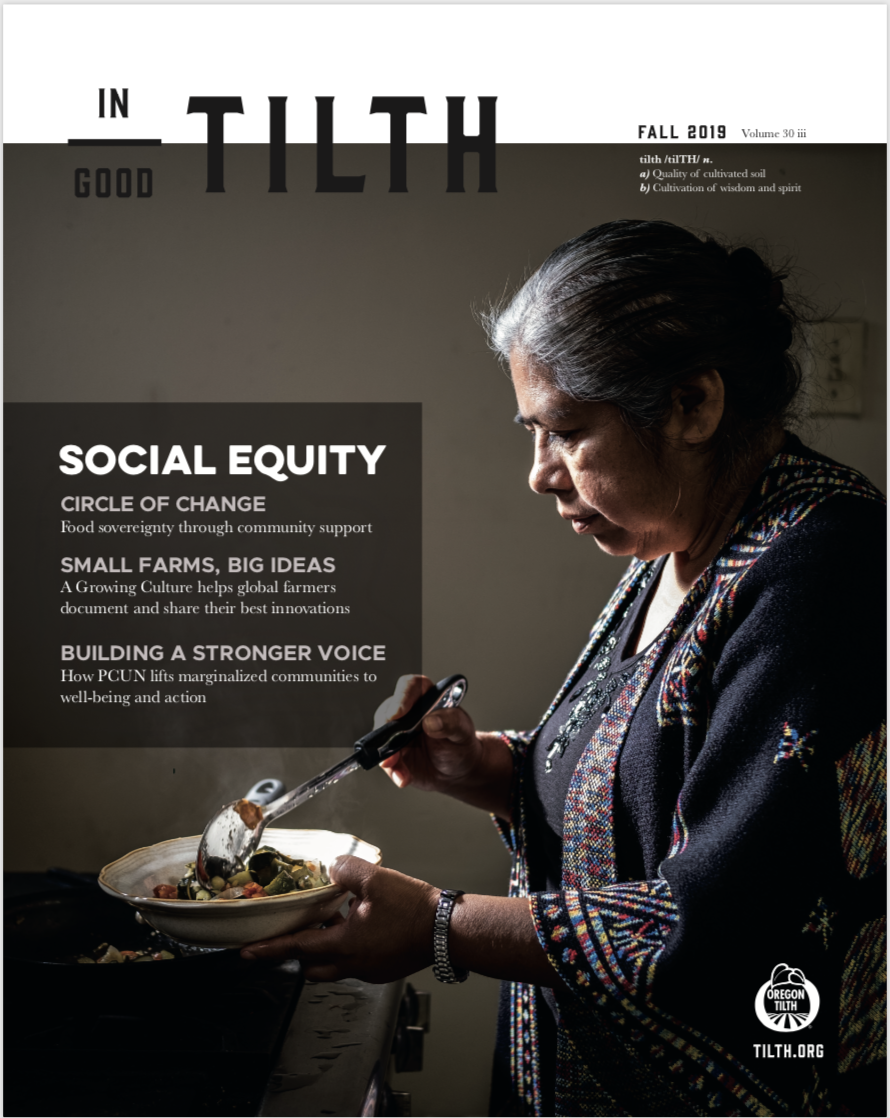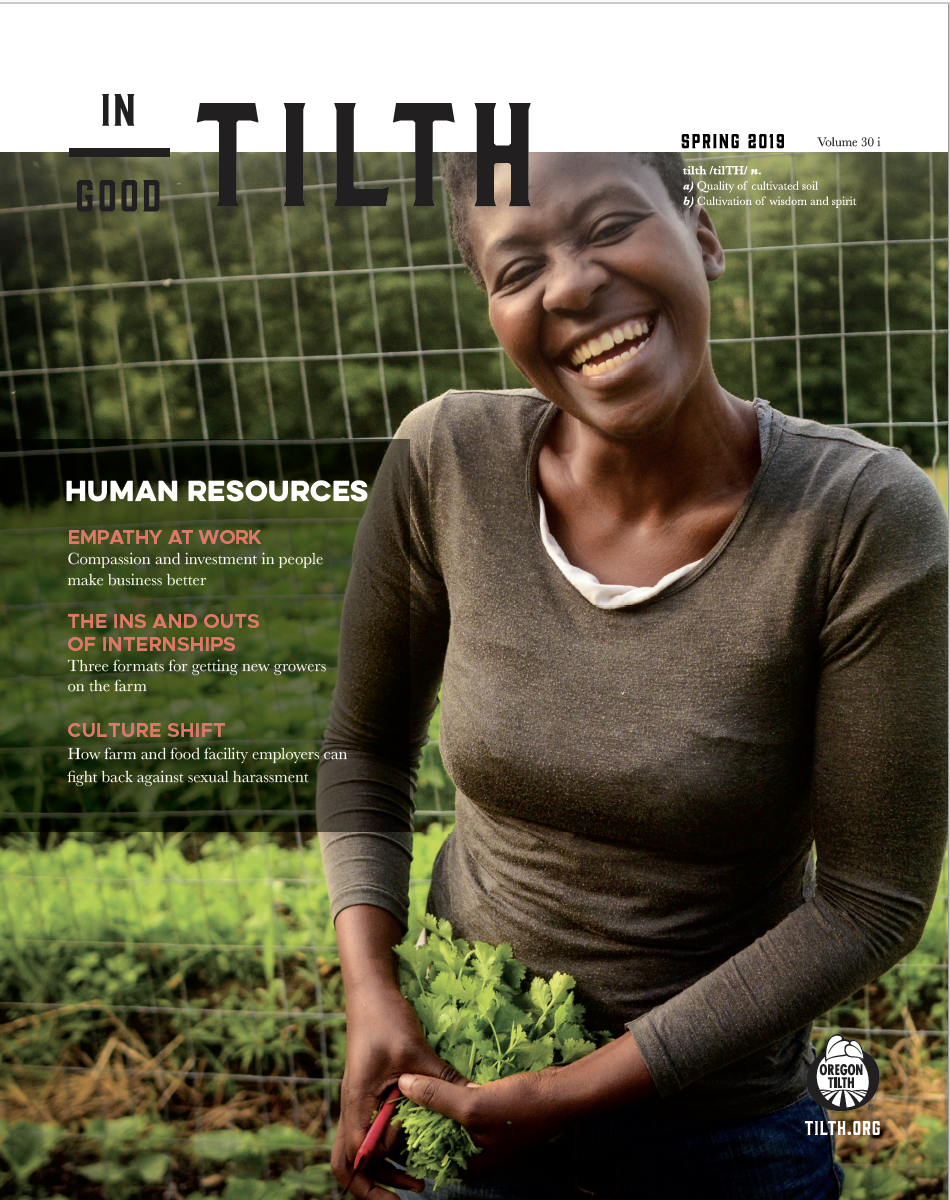Is it possible, as a restaurant, to do business and be transparent in your supply chain?
“The only way we’re going to survive is to tell each other the truth — trust is currency,” said Andre Uribe, executive chef with Bon Appetit, which manages food services and cafes at Willamette University. As a member of the Northwest Food Buyers Alliance advisory team — Oregon Tilth serves on the alliance’s steering committee — Uribe helps schools, hospitals, and correctional facilities provide better food from local sources.
A few years ago, Uribe, Bon Appetit, and Willamette University partnered with Corfini Gourmet — a meat distributor for restaurants and retail markets — in Portland, Oregon and Pure Country Pork farm in Ephrata, Washington to buy “whole hogs.” Uribe wanted to access sustainably produced, local pork for the school’s cafe at a reasonable price.
Uribe understands his friendship with Zack Agopian, sales manager for Corfini Gourmet’s Portland distribution center, played a large part in getting everyone on board.
“Ultimately, we all just sat down and looked at the numbers,” said Uribe. “We agreed on what everyone was going to either make or pay and realized that it was a fair deal for all three of us in the end.”
The flexibility gained from paying a flat, per-pound price meant an increase in work for Uribe’s kitchen staff. But it also required a philosophical shift. He explained that while the per pound cost of a whole hog was less than butchered meat, they were also purchasing bones and other body parts that are typically not used. Now, there was zero room for waste; clear communication and well-understood processes were required to execute the weekly menu plan.
Uribe understands that not all institutions — elementary schools, correctional facilities, hospitals, etc. — have staff that can do butchery or know how to use every animal part. “I talked to a lot of people about the training piece of it because when you think about bringing a whole animal into your kitchen, just the thought of that sounds crazy,” said Uribe. “It sounds like a lot more work than it needs to be.”
Uribe believes a few basic guidelines can set up a kitchen for success:
Menu consistency and flexibility
Uribe and 33 cook staff prepare set menu items — carnitas tacos and ribs — with new recipe ideas. “We know where it’s going to go and my kitchen knows what to do. Part of the menu is improvised, but we always have a plan,” he said. Also, the addition of a $300 meat grinder provides flexibility and more options.
Training and education
Processing an animal — a learnable task — takes an average of one to two hours per week. Uribe uses a combination of one-on-one training and team meetings to teach staff how to accomplish processing and post-processing tasks.
Build a zero waste culture
Uribe applies the “whole hog” model to all practices. The kitchen follows a rigorous food waste plan — even cilantro stems are made into noodles — with unusable scraps going to Sunnyside Organics, a workforce re-entry gardening program, for worm composting. Scales are periodically placed at tray returns in the school cafe and staffed by student volunteers to help eaters understand and decrease waste. It has reduced post-consumer food waste by more than 80 percent.
Uribe acknowledges that “whole hog” is not much of a financial saving. However, when putting out two to three thousand meals per day, having more than 30 people focused on waste reduction means a more engaged and better-compensated workforce. In general, cooks make little money in a physically demanding job. These changes are drastic improvements for kitchen staff livelihoods.
“We pay the same amount of money for the skin of a pineapple as we do for the whole thing,” he said. “The same is true for the hog. If you think about it in those terms, you’re throwing away a bunch of money and nutritional opportunity at the end of the year. If we can continue to come up with creative ways to use more and waste less, I can achieve greater sustainability and ask for that money to be given back to staff.”

























